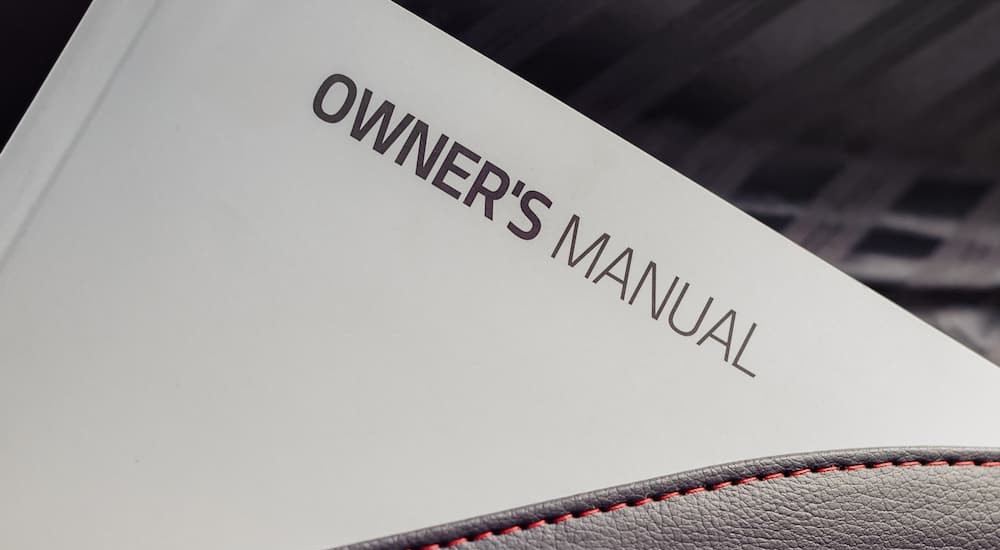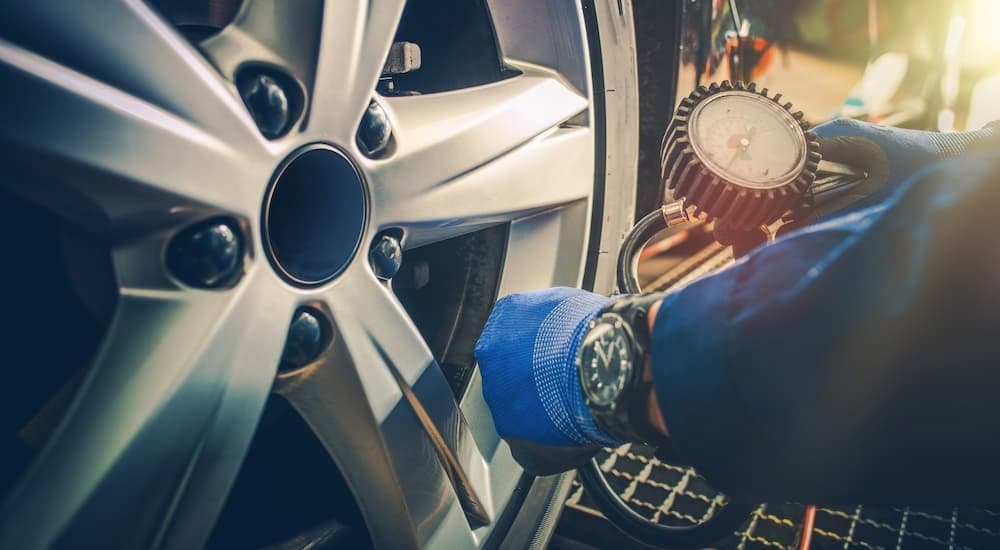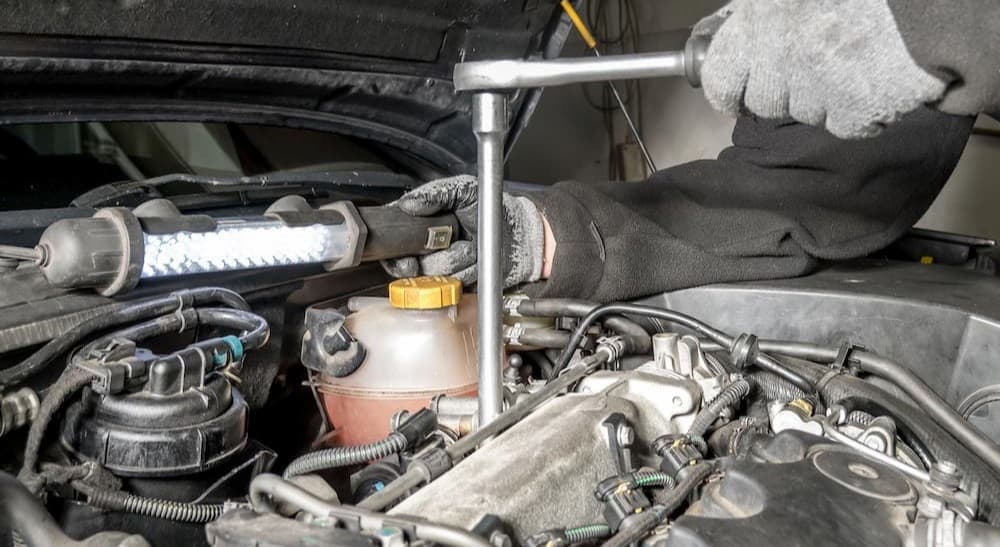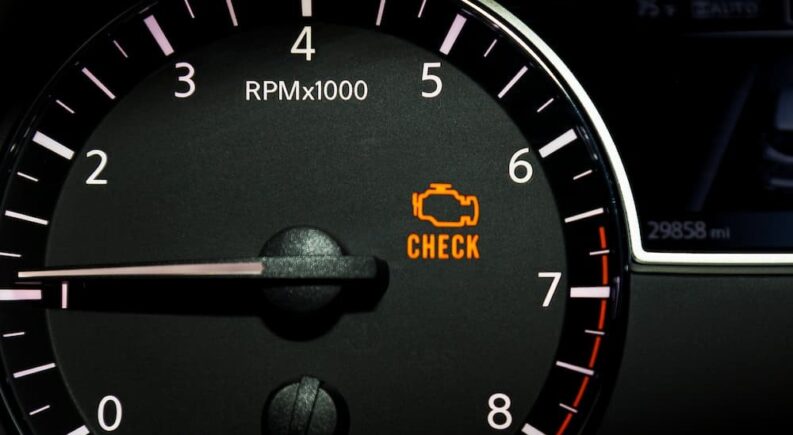Depending on the day, car ownership can either seem like a ticket to freedom or a weighty, gas-powered albatross hanging around your neck. The same car, truck or SUV that’s so pivotal to your everyday life can start to feel like a burden when things go wrong. While some drivers are quick to call in the professionals, others like to try their hand at a maintenance task or repair job. Developing a few basic car repair and maintenance skills is such a vital part of the experience, but all too often, drivers bite off a little more than they can chew.
Before you dive into the wide world of automotive repair and maintenance, it’s important to brush up on some of the basics. Otherwise, it’s all-too-easy to end up with a broken-down ride and the perfect premise for your upcoming memoir: Things I Wish I Knew Before Working On My Car. Before you roll up your sleeves and pop the hood, we thought it might be helpful to present a little cheat sheet covering some of the basic information, tasks and techniques that might come up along the way. We’ve broken down our guide into two sections, covering some of the more rudimentary points of vehicle ownership along with some basic maintenance and repair that you can tackle when you start to build a little confidence.

The Basics
Let’s start with a few tasks that anyone can do, regardless of your level of mechanical expertise, or lack of it.
Owner’s Manual
In all honesty, this entire guide could really be boiled down to a four-word sentence: Read your owner’s manual. This helpful tome includes information on every aspect of your vehicle, from how to change the spark plugs and refill the windshield wiper fluid, to the size of your fuel tank, tires, and more. The owner’s manual is worth a once-over for any driver looking to gain a deeper understanding of their vehicle, but if you want to skip to the good part, go straight to the maintenance schedule. This helpful guide includes a precise schedule of all your basic maintenance tasks, broken down by mileage intervals. Have you ever wondered when to change your serpentine belt or engine coolant, or how often should you check your brakes and pads? It’s all there in the maintenance schedule.
VIN
The Vehicle Identification Number (VIN) is basically your vehicle’s Social Security number. It’s a unique 17-digit number that, when properly translated, can tell you virtually everything you need to know about a vehicle. From make and model to date of manufacture, engine size, and more, the VIN can be an incredibly helpful tool when it comes to vehicle repair and maintenance.
First off, the VIN can be used to find the correct parts for a repair job, giving you the specific year, make and model of your vehicle to ensure you don’t spend hours driving back and forth to the auto parts store in search of the perfect fit. It’s also a great way to get a peek at your vehicle’s history, including any major repairs, recalls or other pertinent information that should be on your radar. How does this aid in a repair? If you’re trying to track down a pesky electrical gremlin that defies all logic, it’s always beneficial to know if similar issues have creeped up in the past and how they were addressed. A quick VIN check can also clue you in to past registrations, thefts, and insurance coverage for your vehicle, as well as if it was ever involved in a flood or suffered extensive water damage.
Tire Pressure
This might seem too basic to warrant a mention, but there’s a common misconception around tire pressure that we want to nip in the bud before you develop some bad habits. Filling up a tire is one of the easier maintenance tasks any driver can undertake. Simply pull up to the pump at your local gas station, set it to the PSI listed on the sidewall, and get pumping, right?
Not so fast. The number you’ll find stamped into the sidewall actually describes a tire’s maximum PSI, not the pressure it should be set to on a regular basis. This seems almost intentionally confusing, but that’s why it’s crucial to read the owner’s manual. The correct PSI for a specific model’s tires is listed in the manual, along with a lot of other helpful information, which is why it’s such an important read. Keeping your tires at the correct PSI will improve efficiency and treadlife, leading to lower cost of ownership and an all-around safer ride.
Check Engine Light
The light so important, we named a whole website after it. The Check Engine Light (CEL) is your vehicle’s Emergency Alert System, replacing those high-pitched boops and beeps of the typical broadcast EAS with a simple dashboard icon.A solid illuminated CEL isn’t good news, but it’s also not the worst news. A solid CEL should be dealt with as soon as possible, but doesn’t necessarily indicate a catastrophic issue that could be the end of your vehicle. A flashing CEL is a whole other story. This indicates an immediate and serious issue with your vehicle, usually a misfire, which can damage your catalytic converter and other important, expensive parts if not addressed. In most cases, you shouldn’t even risk driving to the nearest mechanic or dealership, but call roadside assistance and cross your fingers.

The Next Level
If you’re comfortable with the basics, why not consider going a little bit farther with some slightly more sophisticated tasks? None of these are too difficult, and can save you time and money at the repair shop.
Fix a Flat Tire
As the only part of the vehicle that makes contact with the road, tires go through a lot of abuse over their lifespan. That makes them a prime failure point, which is why knowing how to change a tire is such an important part of owning a vehicle. We won’t go into the step-by-step process for changing a tire, but will share a few tips for a smooth switchover.
First off, find a good spot to place the jack. Most vehicles have four jacking points, usually located under the rocker panels next to each wheel. Again, your owner’s manual is a valuable resource, as it’ll clue you in to your vehicle’s preferred jacking point.
Once you have got the spare tire installed–or a new tire, in the case of a seasonal changeover–don’t forget to torque the wheel’s lug nuts to the correct settingl. This will require the use of a torque wrench, which can tell you exactly how much pressure is being applied to a lug nut. Over or under-tightening lug nuts can lead to plenty of problems, so ignore the urge to eyeball it and invest in the proper tool.
Change Spark Plugs
Aside from your tires, brake pads, and rotors, your spark plugs are going to need to be replaced more than any other component in your vehicle. Normal copper and nickel spark plugs are rated to last around 30,000 to 50,000 miles, while higher-end platinum and iridium plugs can see 60,000 to 150,000 miles before replacement. Sure, the average driver might only need to replace the spark plugs three or four times over the course of a vehicle’s service life, but at $300 to $500 for an entirely new set, that can add up.
Changing spark plugs isn’t the easiest vehicle maintenance task out there, but it’s far from being the most complex. You may have to invest in a few specialized tools, especially if you have recessed spark plugs. But with a little elbow grease and a few YouTube tutorials, it should be well within the wheelhouse of the average DIY mechanic.
Change a Fuse
As our vehicles have evolved over the years, they’re become increasingly complex. This is good news when it comes to power, performance, and efficiency, but bad news when it comes to repairs, especially if you’re dealing with an electrical issue. In the 1950s, the average car contained around 150 feet of wire. Today, that number is more than 4,000 feet, with some luxury and high-performance vehicles averaging well over a mile of wire crammed into the frame, which is why being familiar with your vehicle’s fuse box is so crucial. A blown fuse can affect countless systems around the vehicle, from headlights and tail lights to the climate controls, infotainment system, USB ports, and more. In rare cases, a blown fuse can even prevent a vehicle from starting.
A quick rummage around in your fuse box can help you isolate the issue and determine if it’s simply down to a blown fuse or a more complex issue. Your owner’s manual will give you a map of your fuse box, and a 150-piece box of common automotive fuses can be found on the internet for as little as $8. Find the fuse for the component that isn’t working, then check to see if it is blown. If it is, replace the fuse, and it should come back to life. If the fuse blows again, you have a bigger problem, but this is good information to help your mechanic diagnose the problem.

You Can Do It
Before you dive into the world of the DIY mechanic, it’s important to be honest with yourself about your automotive repair skills. Even a task that might seem simple could get complicated in a hurry if special tools, techniques, or specialized automotive know-how is involved. Take the Chevy Express/GMC Savana, for example. A favorite of tradesmen and van-lifers alike, the popular van has a unique quirk. In order to change the spark plugs, you have to remove both front wheels. That sort of complication can turn a seemingly easy task into an afternoon-long affair, which is why you need to know what you’re getting into, and what tasks you’re comfortable tackling, before you slip into your favorite grease-stained work shirt. A little online research can go a long way, with YouTube videos covering every repair or maintenance task a driver could hope to undertake.
If you’re looking for a more analog approach, try a Haynes or Chilton repair manual. These third-party repair guides go in-depth on every nook and cranny of your vehicle, laying out repair and maintenance tasks in a way that even less experienced drivers can understand. Full of helpful photos and unique to your specific make and model, these guides are a valuable resource that basically acts as an unabridged version of your owner’s manual. If you’re looking to take your vehicle’s repair and maintenance into your own hands, spend a little time hitting the books and you’ll be surprised at just how easy it can be.

